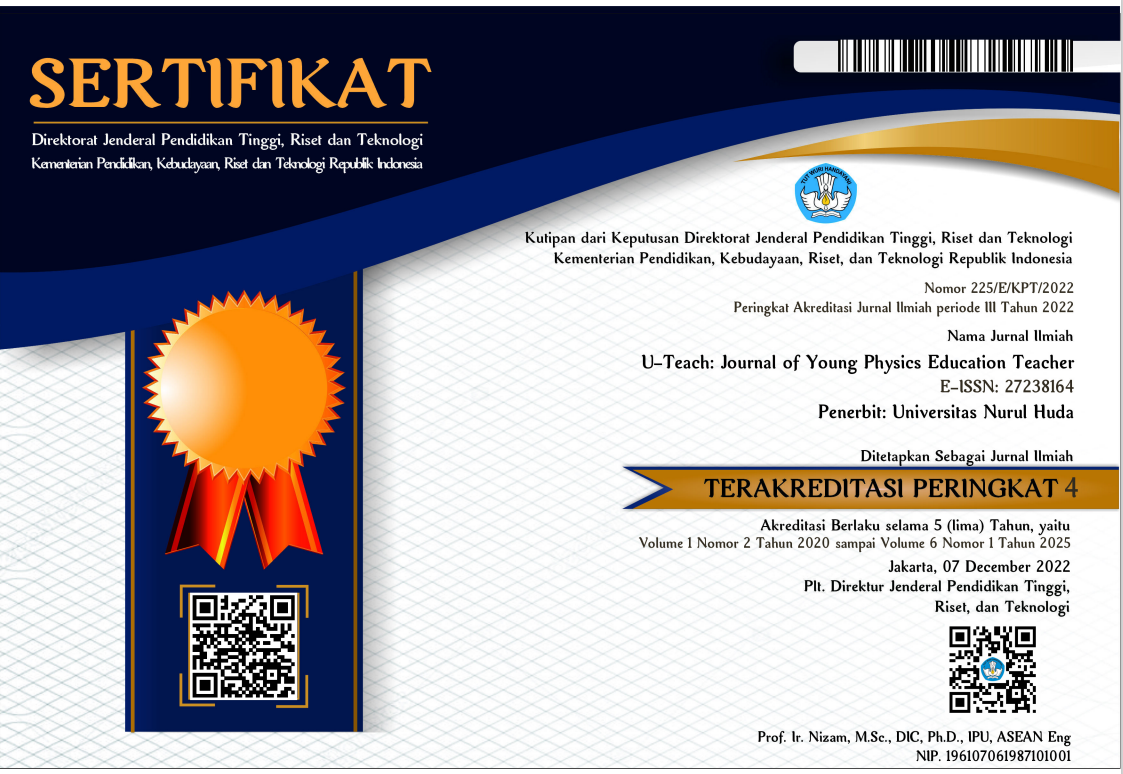Model Pembelajaran Discovery Based Unity of Science (DBUS) dengan Pendekatan SETS: Pengaruh Terhadap Kemampuan Berpikir Kritis Pada Masa Pandemi Covid-19
DOI:
https://doi.org/10.30599/uteach.v2i1.36Keywords:
model DBUS, pendekatan SETS, berpikir kritisAbstract
The purpose of this study was to analyze the effect of the Discovery Based Unity of Science (DBUS) learning model with the SETS approach on students’ critical thinking skills during the covid-19 pandemic. The essay test instrument used in this study amounted to 9 questions. The research was conducted at MTs Hasanuddin Bandar Lampung. This study uses a quasi-experimental method. The sampling technique used is simple random sampling, with class VIII A as the experimental class and class VIII B as the control class. The research data were tested using normality, homogeneity, and hypothesis testing. The results of the N-Gain test in the experimental class showed results of 0.53 in the medium category, while in the control class the results showed 0.16 in the low category. Based on the research data, it was found that the data were normally distributed and homogeneous, so a t-test was carried out with a significant level of 0.05. The results show that tcount>ttable, which is 2.04>2.03, which means H0 is rejected and Ha is accepted. This shows that there is a significant influence on the application of the Discovery Based Unity of Science (DBUS) learning model with the SETS approach to students’ critical thinking skills during learning in the covid-19 pandemic era
Downloads
Downloads
Published
How to Cite
Issue
Section
License
Copyright (c) 2021 Irma Irma, Meriyati Meriyati, Irwandani Irwandani

This work is licensed under a Creative Commons Attribution-ShareAlike 4.0 International License.






